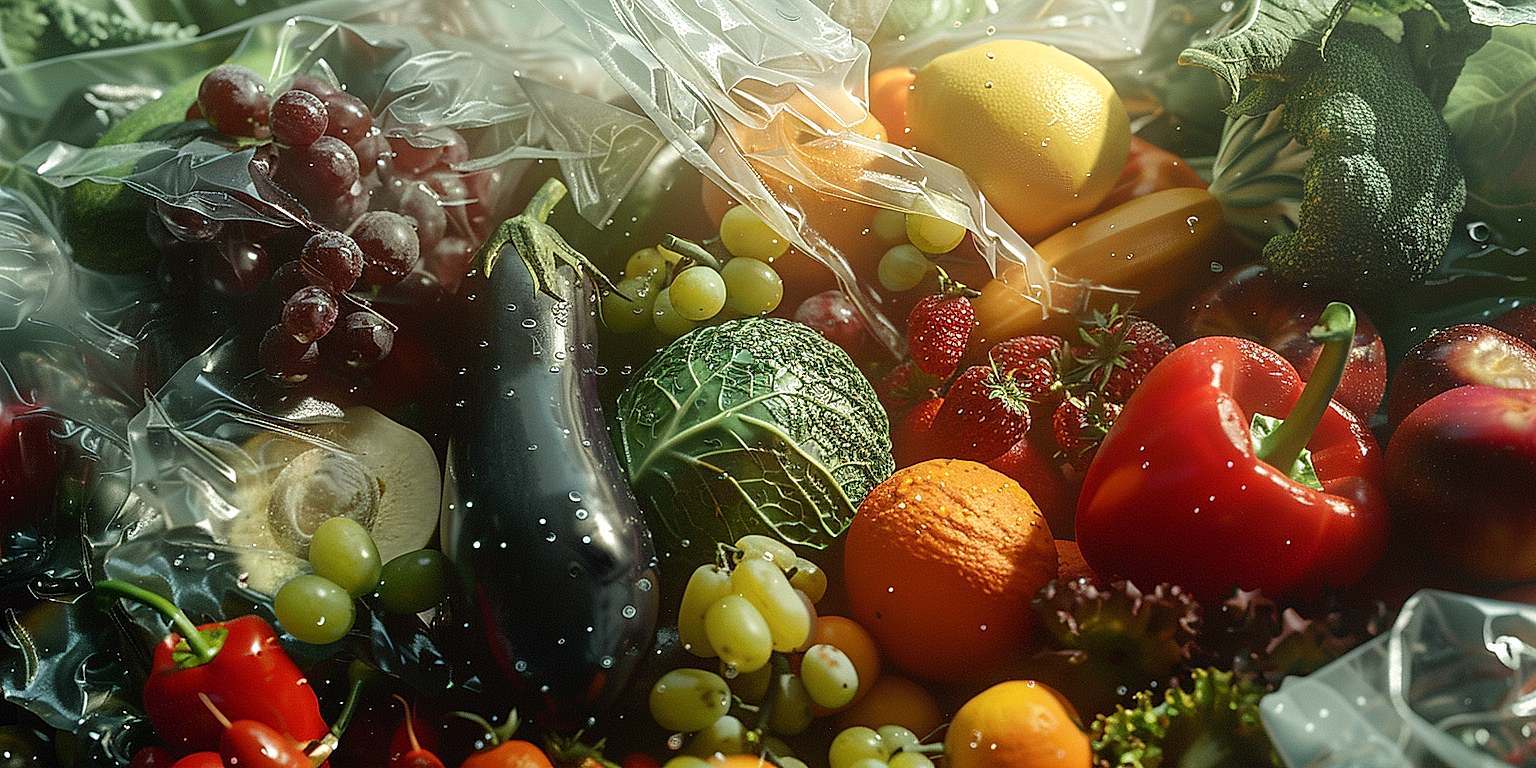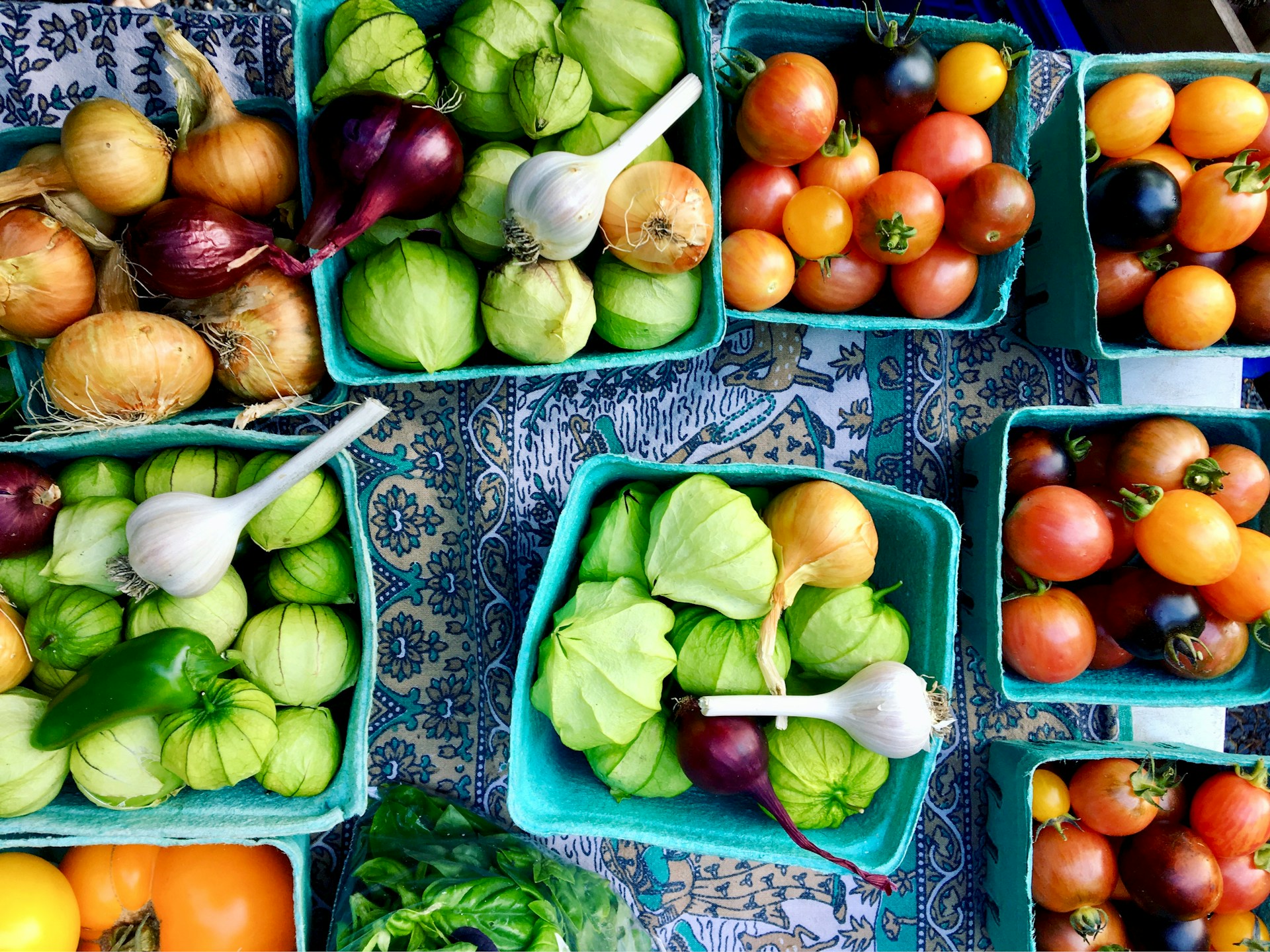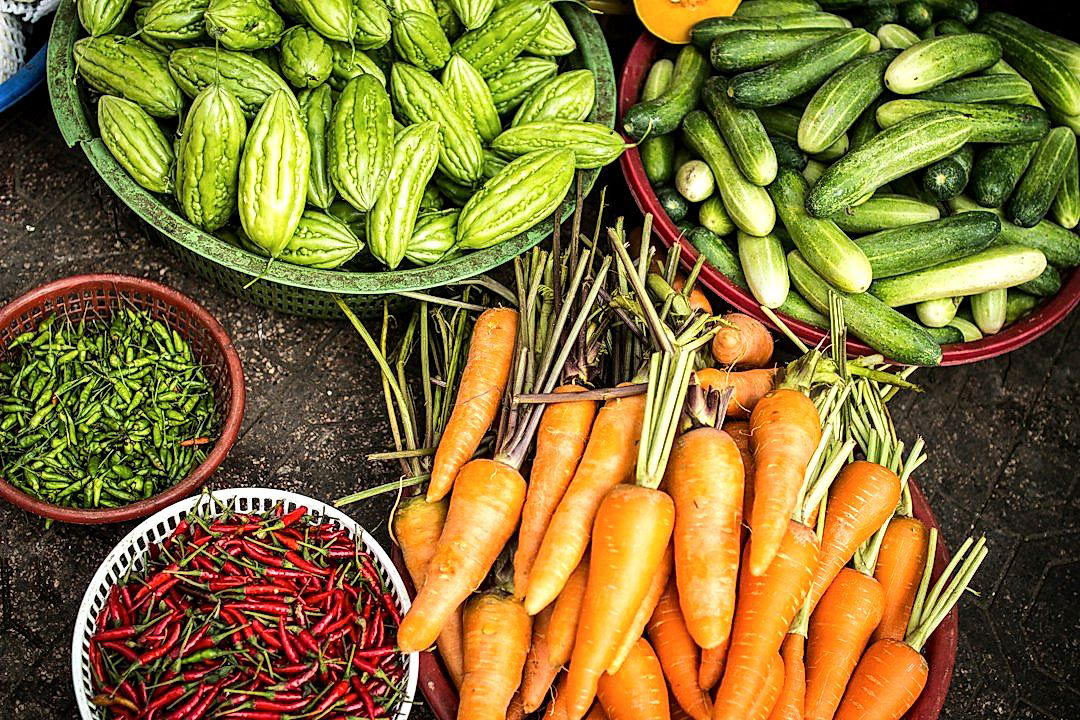The escalating issue of waste in produce distribution continues to threaten both our global ecosystems and economies.
For the wholesale food industry, the inefficiencies of material usage and waste management practices entail significant operational and cost implications.
As a result, these poorly managed waste systems often contribute to negative environmental impact.
The need for sustainable changes in produce distribution has become more pressing than ever before.
Consequently, there is a growing imperative to transition towards zero waste strategies.
The focus of this discourse will be on practical steps to manifest this transition, thus paving the way for more sustainable operations.
Contents
- Steps Toward Zero Waste In Produce Distribution
- 1. Prioritize local, seasonal produce to reduce transport waste.
- 2. Implement reusable packaging for transportation.
- 3. Transition to compostable or biodegradable packaging materials
- 4. Promote Bulk Purchases to Limit Packaging Usage
- 5. Employ efficient storage methods to minimize spoilage loss
- 6. Implement waste-tracking systems to manage inventory
- 7. Encourage consumers to buy imperfect produce
- The Bottom Line
Steps Toward Zero Waste In Produce Distribution
1. Prioritize local, seasonal produce to reduce transport waste.
Guiding the shift toward sustainability in produce distribution hinges on the prioritization of local, seasonal produce.
This singular ambition directly affects the amount of transport waste generated within the supply chain.
By prioritizing locally-grown and in-season fruits and vegetables, we significantly reduce the transportation distance, thereby lowering carbon emissions and fuel consumption.
The implementation of local, seasonal produce as a priority can thus, serve as a game-changer in our quest to strive for zero waste in produce distribution.
Purchasing produce from local sources boosts local economies and supports small-scale farmers.
These farmers, often practice sustainable farming methods that nurture the soil, conserve water and reduce farm pollution, further solidifying the environmental benefits.
This practice also fosters a communal sense of responsibility for the environment and a stronger attachment to the land.
Importantly, it is not just about the environment and local economy, seasonal produce is believed to be fresher, tastier, and richer in nutrients.
Seasonality ensures that we consume a diverse range of fruits and vegetables throughout the year, encouraging a balanced and nutritious diet.
The longer shelf-life of local, seasonal produce significantly reduces waste, since produce doesn’t have to be discarded as quickly as imported, out-of-season fruits and vegetables.
Admittedly, prioritizing local, seasonal produce might not initially cater to the variable consumer preferences for certain fruits and vegetables year-round.
Yet, educating consumers about the environmental implications and the benefits of adjusting their consumption patterns to align with the local harvest calendar could potentially shift demand.
In essence, taking such an approach requires that all stakeholders, from farmers to consumers, reassess their habits and commitments in the pursuit of a more sustainable produce distribution system.
While this step may seem challenging, it is fundamentally necessary for achieving a future where produce distribution operates with zero waste.
By choosing this path, we begin to rewrite our relationship with the environment and reshape society’s expectations for how produce is grown, transported, and consumed in a truly sustainable way.
2. Implement reusable packaging for transportation.
Reusable packaging is one of the most effective and sustainable solutions towards achieving zero waste in produce distribution.
Every year, millions of tons of plastic and cardboard are used for the transportation of fruits and vegetables, with a significant percentage ending up in landfills.
This not only increases waste, but also contributes heavily to carbon emissions through the production and disposal of these single-use packaging materials.
On the other hand, implementing reusable packaging could drastically reduce this waste and its resulting environmental footprint.
Reusable packaging could include crates, boxes, or bags made from durable materials like plastic, wood, or fabric that can be used multiple times.
This will not only minimize waste but also reduce costs in the long run as these materials can be used multiple times before replacement is required.
For instance, many transportation companies are now adopting plastic crates which can be returned, cleaned, and reused for the next shipment.
Thus, the initial cost of investment in these durable assets is offset over time by the reduction in waste disposal costs and the decreased need for continually purchasing disposable packaging materials.
In addition to cost-savings, these practices also provide an opportunity for businesses to demonstrate their commitment to sustainability, attracting environmentally-conscious customers and, potentially, leading to increased sales and revenue.
However, the implementation of reusable packaging requires proper planning and coordination among all members of the supply chain.
This includes farmers, packers, distributors, retailers, and consumers to ensure generated waste is minimal and leading to zero waste.
For instance, it may require changes in the collection and return processes, with adequate facilities for cleaning and storing reusable packaging between uses.
Also, necessary measures should be taken to ensure that the use of reusable packaging does not compromise the freshness and quality of the produce being transported.
To accomplish this, produce distribution companies might require modifications in their logistics, supply chain operations, and inventory management systems.
Given these requirements, transitioning towards reusable packaging might seem daunting initially, but the multi-faceted benefits in terms of significant reductions in environmental impact, cost savings, and a more sustainable and efficient business model cannot be overstated.
3. Transition to compostable or biodegradable packaging materials
As a crucial step towards achieving zero waste in produce distribution, the process must incorporate a move to compostable or biodegradable packaging materials.
Conventional packaging materials, such as plastics and polystyrene, are unarguably detrimental to the environment due to their inability to biodegrade, thus leading to waste accumulation.
On the contrary, compostable or biodegradable packaging materials can break down into organic materials over time, reducing the amount of waste generated significantly.
It should be noted, however, that transitioning to such materials requires careful planning as well as supply chain restructuring.
More importantly though, popularizing and normalizing the usage of these eco-friendly packaging alternatives will necessitate conscious efforts from not just the distributors and retailers, but also the end consumers.
This transformative step thus demands a wholehearted collaboration that transcends the supply chain to reach the consumers.
Incentives for consumers to adopt such changes could be structured into the sales strategy, thereby promoting its usage.
Product labels emphasizing the use of compostable or biodegradable packaging could act as an effective marketing tool to encourage this switch.
Also, retailers and distributors could additionally offer discounts or reward points for customers who buy products packaged in compostable or biodegradable materials, fostering a loyal base of environmentally conscious consumers.
Training and education should equally play a significant role in this transition, wherein all parties involved understand the advantages of these materials along with the positive impact they have on the environment.
Simultaneously, vendors and third-party logistics providers would also need to be brought on board for a seamless transition to compostable or biodegradable materials.
They would need to acquainted with the new packaging materials, their proper handling, storage and disposal techniques to ensure maximum effectiveness.
Moreover, additional support from legislation and policies encouraging the use of such materials could significantly bolster their adoption across all levels of produce distribution.
Lastly, constant monitoring and revision would be required to assess the effectiveness of the new materials and make modifications where necessary, thus ensuring the uninterrupted progress towards zero waste in produce distribution.
Overall, a move to compostable and biodegradable materials in packaging is a vital leap towards more sustainable produce distribution models and ultimately, a zero waste world.
4. Promote Bulk Purchases to Limit Packaging Usage
Under the umbrella of sustainable initiatives, there lies a significant push towards encouraging bulk purchases in an effort to limit the usage of packaging.
These initiatives are inherently designed to reduce the volume of packaging waste traditionally associated with smaller, single-use items.
Further, this strategy integrates well into the aim of achieving a zero-waste produce distribution system by limiting the creation of waste at the source itself.
Pushing for bulk purchases does not only make environmental sense, but it also offers considerable economic advantages.
For example, buying in bulk often equates to the reduction of per-unit cost, thereby bringing financial savings to both distributors and consumers alike.
Bulk purchasing encourages producers to utilize reusable packaging solutions, further promoting a circular economy where resources are endlessly cycled back into the system and waste is dramatically minimized.
Moreover, bulk purchasing provides a platform for an immediate shift in consumer behavior – a necessary step towards sustainable consumption.
Importantly, the bulk buying approach needs to be balanced with the need to avoid food waste.
Consumers encouraged to buy in bulk must also be educated about the proper storage of such produce to prevent spoilage and wastage.
Simultaneously, businesses can integrate bulk purchasing initiatives with waste management technology for accurate inventory control to simultaneously manage potential overstock scenarios.
The packaging industry also has a key role to play with businesses needing to shift towards reusable, returnable packaging solutions for bulk purchases.
This entails creating sturdy, robust packaging which can handle the demands of a zero-waste supply chain, thereby ultimately prolonging the packaging lifecycle and minimizing waste.
Policies favouring bulk purchases in turn influence the whole supply chain, from packaging manufacturers to distributors to retailers and finally consumers, helping create a more sustainable and eco-friendly system.
Strategies that emphasize bulk purchases can effectively channel the power of collective behaviour towards achieving a shared goal of reducing packaging waste and moving towards a more sustainable future.
In conclusion, bulk purchasing remains an integral step towards zero waste in produce distribution, challenging the status quo and paving the way for a more sustainable food distribution model.
5. Employ efficient storage methods to minimize spoilage loss
Employing efficient storage methods is crucial in the quest towards achieving zero waste in produce distribution.
Produce often gets wasted in the process of distribution due to poor storage conditions leading to premature spoilage.
Poor storage can greatly affect the shelf life of produce, reducing their quality and hence leading to waste.
Therefore, investing in proper storage facilities and processes is a critical step that cannot be overlooked in produce distribution.
When storage methods are efficient, they help to maintain the quality and freshness of produce for longer periods, minimizing waste due to spoilage.
There are different storage techniques depending on the type of produce.
For instance, cold storage is effective for many fruits and vegetables.
These produce items need the right temperature and humidity levels to prevent premature spoilage.
Another important consideration in storage is also the allocation of produce; dense packing of produce can lead to bruising and spoiling.
Produce needs enough space to breathe and avoid pressure that can cause damage.
Apart from physical storage, efficient monitoring of the stored produce also plays a significant role in minimizing spoilage loss.
Produce needs to be regularly checked for signs of rotting, and rotten produce should be quickly removed to prevent the spread.
Different types of produce might need different storage conditions.
So, it’s imperative to understand the storage needs of each produce type for efficient storage.
Proper training for the staff involved in storage and handling of produce is also important to ensure they handle the produce correctly thereby reducing waste.
In conclusion, while applying efficient storage methods, it’s also essential to consider efficient distribution mechanisms to get the produce to the market as fast as possible to avoid spoilage due to over storage.
6. Implement waste-tracking systems to manage inventory
One of the vital steps toward achieving zero waste in produce distribution is implementing waste-tracking systems to manage inventory.
This approach involves using technology to monitor the quantity of produce being distributed and determining how much is being wasted.
Waste tracking systems are instrumental as they pinpoint the exact sources of waste within the distribution chain.
Knowing the specific areas where waste occurs makes it easier to devise effective solutions aimed at removing or reducing waste.
This technology plays a crucial role in reducing waste and improving efficiency in the distribution process.
Cutting-edge technology, such as RFID tags and digital platforms, can provide real-time updates on the status of the inventory, making it easier to manage and reduce waste.
This transparency helps to optimize the distribution process by reducing overstocking and underselling, hence minimizing food waste.
Detailed reports generated by waste tracking systems can highlight patterns and trends in waste generation that might otherwise go unnoticed.
Over time, this data can be used to forecast demand for certain products, improving accuracy in ordering and reducing over supply.
Additionally, high precision tracking can help to identify any quality issues that may lead to wastage before the product reaches the consumer.
Through waste-tracking systems, businesses can better align their supply with demand, reduce spoilage and waste, and increase efficiencies.
An added bonus—waste tracking systems can significantly improve profitability for businesses.
The saved costs from reducing waste, over time, can be substantial for a company’s bottom line.
Moreover, implementing these systems exhibits a company’s commitment to sustainability, which can enhance its reputation and appeal with environmentally conscious consumers.
Therefore, waste tracking systems, with their potential to drive down waste and improve efficiencies, are indispensable tools in the push toward zero waste in produce distribution.
While the initial investment into these systems might be substantial, the long-term benefits in waste reduction and increased efficiency persistently underline their worth.
7. Encourage consumers to buy imperfect produce
Imperfect produce, also known as ugly fruit and vegetables, represents a significant portion of food waste in the produce distribution industry.
Public perception of freshness and quality is often tied to the appearance of the produce, resulting in retailers rejecting or discarding produce that does not meet visual standards but is nutritionally equivalent to perfect looking produce.
Changing this perception presents an opportunity to reduce food waste significantly in the distribution process.
Efforts are needed to educate consumers about the benefits of buying and consuming imperfect produce.
This imperfect produce is not only just as good for consumption, but choosing it also aids in the fight against unnecessary waste.
Several companies have initiated programs to sell ugly produce at discounted prices, demonstrating that there is a market for such products.
Marketing strategies can play a key role in changing consumer behavior towards purchasing and accepting imperfect produce.
Their successful implementation proves that with proper education and clever marketing, customers can be encouraged to embrace these products, which may have otherwise contributed to waste.
Increased efforts should be made to normalize the purchase and consumption of these perfectly edible, but often overlooked fruits and vegetables.
Discarded fruits and vegetables due to cosmetic imperfections make for a large part of food wastage and changing consumer trends can drastically reduce it.
Strategies such as offering imperfect produce at discounted rates, relabeling them as ugly but tasty or integrating them into processed foods like soups or juices can also be effective.
Implementing comprehensive marketing campaigns that highlight the environmental benefits of purchasing imperfect produce can also change consumer perception.
These efforts, along with other systematic changes in the distribution practices, can play a crucial role in achieving zero waste in produce distribution.
In a world focused on sustainability, the refusal of imperfect produce is a wasteful luxury we can no longer afford.
As conscientious consumers, the choice of embracing the imperfect is a step towards a more sustainable future.
The Bottom Line
Moving towards a more sustainable food supply chain is an imperative step in protecting our environment and minimizing waste.
Harnessing local, seasonal produce, utilizing reusable or compostable packaging, and encouraging purchases in bulk and of imperfect produce can all serve to reduce our carbon footprint.
Impeccable storage methods and effective waste-tracking systems are key in avoiding needless spoilage.
Educating consumers on these strategies further builds on these necessary transformations.
Collectively, these adjustments can be a driving force in making the food industry more efficient while reducing our impact on our planet.




